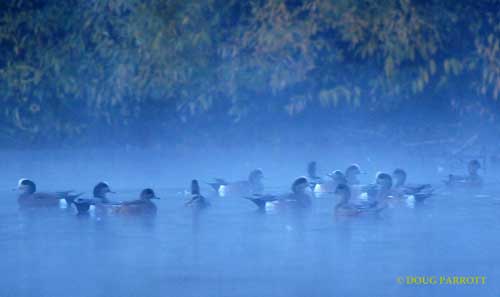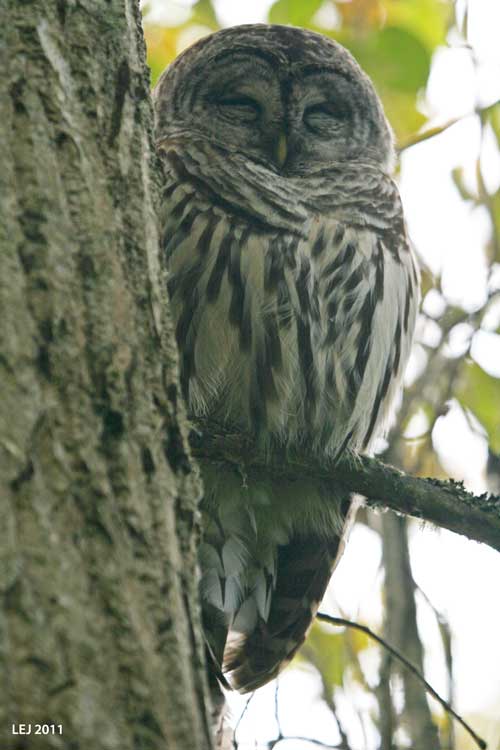In the still mornings of winter, when the air is humid and chill, the fog drifts across the lake in vapors of chiffon. If the sun is strong enough, the vapors fade into nothingness as the day advances. But if the fog is stronger, it thickens with the day, squeezing the land tightly along the shore, shrinking our vistas, fading the last golden colors of fall into shimmering gray. Such mornings are rare at the Fill, and not to be missed.
Yesterday morning, I thought the fog would triumph over the sun, making all the world silver. I dressed in my coats of many layers and hurried to the east end of Wahkiakum Lane, gateway to the Fill. The fog was so thick, it beaded in droplets on my binoculars. I started walking, able to find my way only because I have walked this trail countless times and cannot now go astray.
Ten steps past the Lone Pine Tree, I could dimly see the trees shrouding Boy Scout Pond as they loomed indistinctly over the Loop Trail. It was so quiet, I could hear the splash of a diamond drip of dew that condensed on the tip of a branch, trembled briefly, and then let go. The tiny plop it made when it landed on a poplar leaf was the sound of intimacy.
If you come on such a morning, you might think you are all alone in this gray world. But if you stop and listen, you can hear the scritch, scritch of a Spotted Towhee flinging leaf litter aside in gay abandon as it searches for seeds. Nearby, a Pacific Wren chitters a snatch of its song, then abruptly stops in mid-phrase. I guess it’s too cold to sing a full song, even for the world’s smallest, most accomplished tenor. The Song Sparrow who grew up in this grove rattles the bare branch of his favorite bush, gives one chirp to acknowledge me, then falls silent. In the distance of Main Pond, I can hear the American Wigeons talking to each other: “Tew-TEW-tew, tew-TEW-tew.” I wish I knew what it meant, but I do not speak wigeonese.
Birds on these mornings are everywhere heard but nowhere seen. It is a magical kingdom — for those of us willing to enter it.


